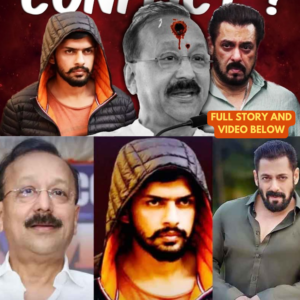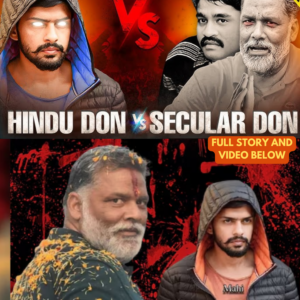That dangerous weapon of Lawrence Bishnoi which knows every secret | Anmol Bishnoi | Sushant Sinha | Salman Khan
In recent months, the name Lawrence Bishnoi has gained notoriety across India and beyond. Known for his criminal activities, the intrigue surrounding him is heightened by questions about his operations while incarcerated. A key figure in this narrative is his brother, Anmol Bishnoi, who many believe is even more dangerous than Lawrence himself.
Despite being in prison, Lawrence Bishnoi has managed to maintain a considerable influence over his gang. This has raised eyebrows among political leaders, with some, like Congress member Ajay Rai, alleging that the ruling BJP is providing covert support to Bishnoi. However, the discussion often steers clear of politics, focusing instead on the criminal undertakings that continue under Bishnoi’s direction.
Anmol Bishnoi plays a pivotal role in executing his brother’s orders. Described as the operational leader of the Bishnoi gang, Anmol is said to handle recruitment and manage various criminal activities. His involvement extends to high-profile incidents, including the murder of singer Sidhu Moosewala, where he was instrumental in the planning and execution of the crime.
The current situation regarding Anmol Bishnoi is alarming. He remains at large and has recently been added to the National Investigation Agency’s most-wanted list, with a bounty of ₹5 lakh offered for information leading to his arrest. His ability to operate outside of prison poses a significant threat, particularly to high-profile individuals such as Bollywood actor Salman Khan.
Law enforcement agencies are becoming increasingly vigilant as they recognize the potential dangers posed by the Bishnoi gang. Recent warnings have been issued to the public, particularly targeting those who display images of Bishnoi or his associates on social media. Authorities are concerned that such actions could glorify criminal behavior and inspire copycat incidents.
The dynamic between Lawrence and Anmol Bishnoi resembles that of a well-coordinated criminal enterprise. While Lawrence may be behind bars, Anmol’s freedom allows him to manage the gang’s operations from the outside. This relationship underscores the challenges faced by law enforcement in dismantling such organizations.
Anmol’s reputation as a powerful figure in the gang is further emphasized by reports suggesting he has connections and resources that facilitate his criminal activities. His ability to control operations remotely showcases the adaptability of modern criminal organizations, making them difficult to combat.
Public fascination with the Bishnoi brothers is not just about their criminal exploits; it also highlights a deeper societal issue regarding gang culture in India. Many young people are drawn to the perceived power and influence that figures like Lawrence and Anmol represent, complicating efforts to dissuade them from a life of crime.
As the narrative surrounding the Bishnoi brothers continues to unfold, it is clear that their impact extends far beyond their immediate criminal activities. The ongoing threat they pose to society, particularly to celebrities and public figures, warrants serious attention from both law enforcement and policymakers.
In conclusion, the Bishnoi brothers exemplify the complexities of organized crime in contemporary society. Their story is a cautionary tale about the consequences of gang culture and the challenges faced in eradicating such influences. As authorities ramp up efforts to tackle this issue, the Bishnoi saga remains a focal point in discussions about crime and security in India.
News
Amitabh Bachchan behaved badly with his daughter-in-law Aishwarya Rai | Amitabh IGNORE Aishwarya Rai
In recent weeks, a wave of speculation has emerged suggesting that all may not be well between former Miss World Aishwarya Rai and the iconic Bachchan family. This speculation has captured the attention of fans and the media, as rumors…
Amitabh gave a message to daughter-in-law Aishwarya Rai, said “No matter how your house is, it is yours”
Amitabh Bachchan, the iconic figure of Indian cinema, has a longstanding tradition of engaging with his audience through social media. He often shares reflections on his life, career, and personal philosophies. Recently, a particular post of his has stirred significant…
Salman Khan vs Lawrence Bishnoi | Why it is Happening? |
Salman Khan vs Lawrence Bishnoi | Why it is Happening? | The tension between Bollywood superstar Salman Khan and gangster Lawrence Bishnoi has become a hot topic in recent news. This clash is not just a simple feud; it embodies…
Lawrence Bishnoi Vs Pappu Yadav | Bishnoi Targets Anti-India Mafia?
In the ever-evolving landscape of India’s criminal underworld, a new chapter is unfolding, marked by the dramatic confrontation between notorious gangster Lawrence Bishnoi and the infamous Bihar don, Pappu Yadav. This rivalry has escalated recently, with Bishnoi’s gang issuing a…
LAWRENCE BISHNOI VS SALMAN KHAN, PAKISTANI PUBLIC REACTION AFTER NADEEM KHAN VIRAL VIDEO, REAL TV
The recent controversy involving Bollywood superstar Salman Khan and Lawrence Bishnoi has sparked intense discussions across communities, especially concerning allegations of animal cruelty. The speaker, representing a particular community, emphasizes that if there is evidence that Khan has harmed a…
LAWRENCE BISHNOI’S DIWALI GIFT TO PAPU YADAV LIVE, AFTER NADEEM KHAN & SALMAN KHAN, LATEST NEWS
In a recent live discussion, significant attention was drawn to the ongoing tensions surrounding Pappu Yadav and Lawrence Bishnoi, especially in light of recent developments involving prominent figures like Nadeem Khan and Salman Khan. The speaker began by addressing the…
End of content
No more pages to load











